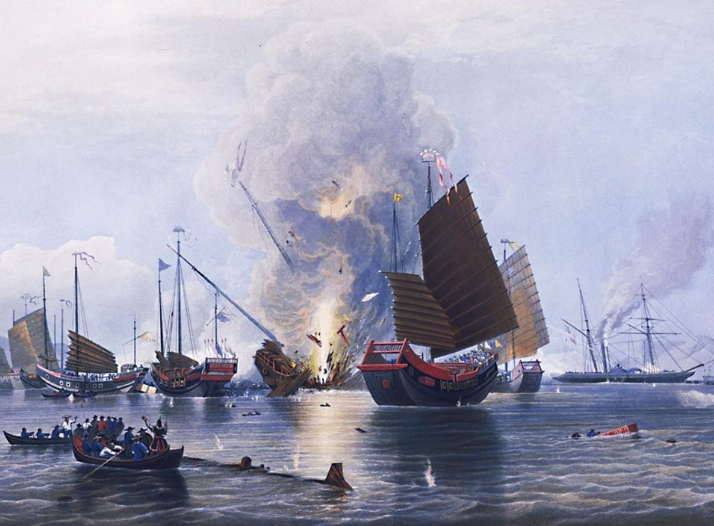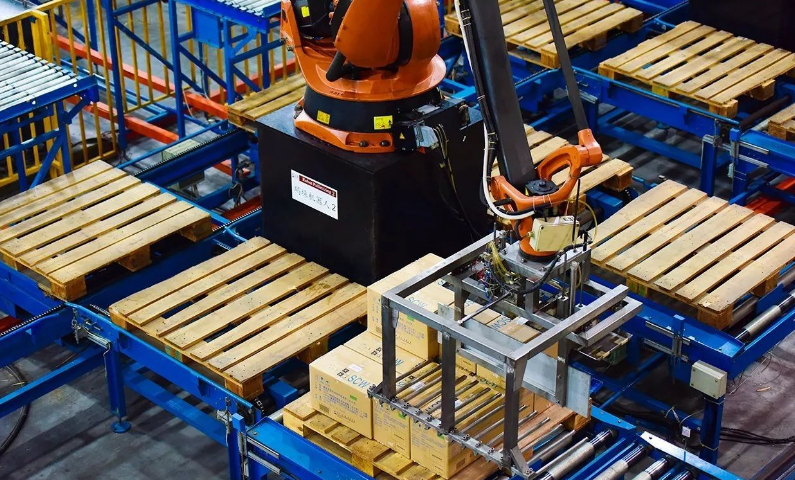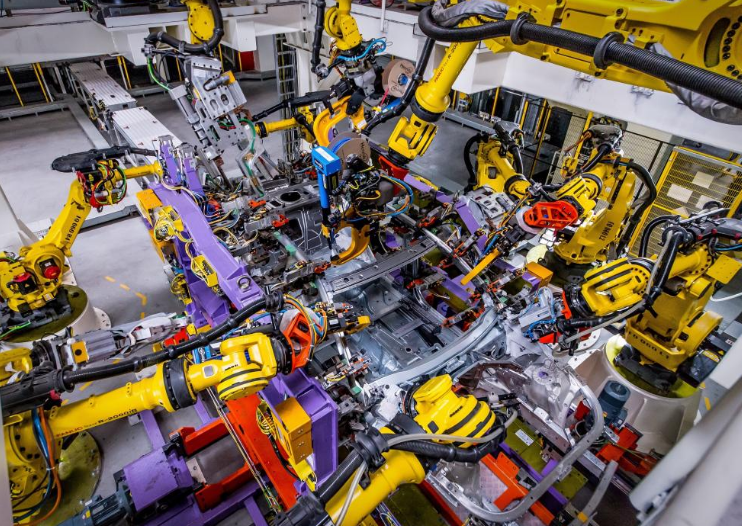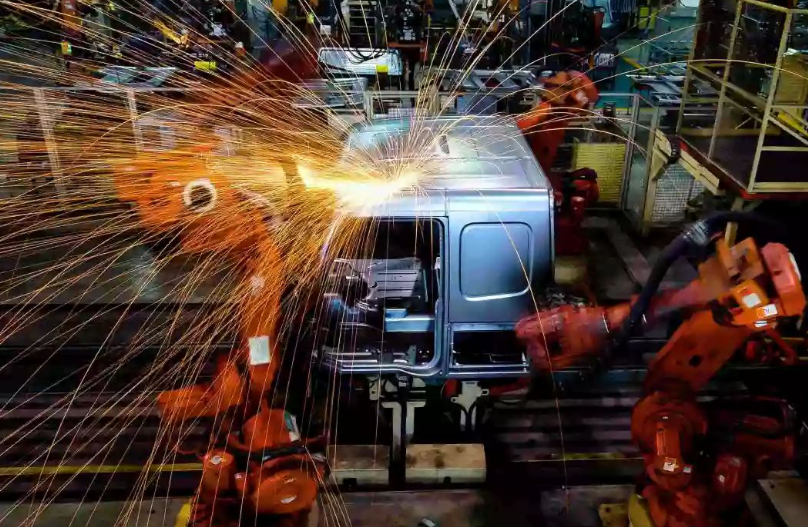For decades, nothing happened, but in recent weeks, it happened one after another. For example, the United States entered Afghanistan at the end of 2001 and occupied it for 20 years. Another key event was basically not noticed. At the Doha meeting, the World Trade Organization voted By accepting China as a full member, 1.3 billion people have been absorbed into this world’s largest economic organization, making Beijing a center of international business.
From that moment on, global trade tilted towards China, and China steadily became a major trading partner in Asia, Africa, Europe, and South America. China’s manufacturing industry turned this country into a world factory. But in order to achieve this, China had to go through How did we accomplish a painful process of economic experimentation? How did China evolve from a poor agricultural society to an industrial power? Today, let us discuss this issue.
China’s rapid rise is not an anomaly, but a return to historical normality. In the Qing Dynasty 1800 years ago, the Qing Empire’s GDP accounted for almost one-third of the world’s GDP. At home, China possessed the same maturity as Europe’s. In the market economy, silk textiles and ceramics were exported to Europe in large quantities, resulting in an unbalanced trade surplus. However, China’s huge population can only make it come this far. With the rise of the industrial revolution in the West, the surplus wealth generated, For the European empires to accelerate their colonial pursuits, it was a disaster for China.
From the Opium War in 1839, the country was suppressed by a series of foreign invasions. First, the British steamship forced the Chinese ports to open up to the opium trade. Then the Russians annexed part of Manchuria. By 1895, Japan occupied both the Liaodong Peninsula and the Liaodong Peninsula. Taiwan, at the same time as all of this, a series of violent rebellions and civil wars have come one after another. Our early pioneers knew that industrialization is vital to survival, but without strong central governance, the country is too large to change its backward self-sufficiency. In a self-sufficient way, the Qing Dynasty’s modernization plan failed, and even the Republican government that replaced the imperial rule proved powerless.

The unstable situation lasted until 1945, when the Japanese army was expelled from China. By 1949, the new China became profitable, and it was finally possible to pass national reforms. At first, there were some successes. Industrial production increased, especially in steel, coal, and coal. In terms of petrochemical production, while heavy industry is booming, agricultural production has lagged behind. Under the background of the post-war baby boom and labor urbanization, the poorly performing agricultural sector has put tremendous pressure on my country’s food security. After that, the well-known movement to set up migrant workers began. At that time, China’s industrial development was still lagging behind.
At the same time, large-scale manufacturing industries were developing in Japan and South Korea throughout the 1960s and 1970s. At that time, China’s industrial development was not as fast as Japan and South Korea. Why is this the case? Because Japan and South Korea copied the Western system And with the help of the United States and other countries in the West, China at that time not only needed to explore its own path, but was even completely blocked by the countries in the West. Western alliances such as Batumi greatly restricted China’s development.

On the other hand, Japan and South Korea have further developed their own assets in the years after the war, and they generally follow the three-step model. The first is land reform. By breaking down large estates into small plots of land, this promotes market competition, which in turn promotes food production, improves the efficiency of the agricultural system, and also triggers large-scale migration of farmers to cities in order to find employment opportunities. Transformation is taking shape throughout the surrounding area.
The second step is to shift the economy to export-oriented manufacturing. By using their new urban labor force and existing export infrastructure, East Asian countries have begun to dominate global manufacturing, especially in the consumer electronics field. By focusing on exports, Japan , South Korea can create the foreign exchange needed to accelerate the technology transfer process.
Third, every country adopts restrictive financial policies to direct capital to areas favored by its development strategy. Low interest rates allow cash flow to flow back into investment in national infrastructure and investment in industry by enterprises. Capital control prevents the wealthy from transferring funds overseas. At the same time, the lower exchange rate makes East Asian exports more competitive. Naturally, these policies are opposed by Western companies. Asian companies can openly enter the U.S. market, while U.S. companies But being locked out of Asia, this makes many business owners feel uncomfortable, because a large amount of intellectual property has been stolen. The United States at the time had no objection to this trade-off, because it needs strong and capable allies in Asia. This explains. Why did Washington deviate from its free trade principles and allow its allies to operate a business list economy.

However, we are also very good at learning from each other and starting to reform the economic system in an all-round way, and adopted a similar three-step route. China’s secret weapon is its huge territory and population. The area of each province is equivalent to the entire country, which means Therefore, economic experiments can be carried out nationwide, and then promoted nationwide. For example, in Anhui, agricultural communes are broken down into smaller plots, allowing small rural farmers to retain surplus grain. Incentive measures have resulted in food production. Surge.
Between 1978 and 1984, agricultural production increased by one-third, while average agricultural income more than doubled. In addition, the safety of land ownership encouraged farmers to invest in capital goods such as tractors and other types of machinery. With the mechanization of agriculture, agricultural output and local manufacturing have grown steadily, and manufacturing processes in major cities have been changed to adapt to China’s natural advantages.
Since then, with China’s opening to the outside world, my country has begun to attach importance to the production and export of light industries, such as clothing, cosmetics and toys, and Made in China has become an independent brand. At the same time, the establishment of new factories encouraged urbanization. China’s urban population increased from 190 million in 1980 to 300 million ten years later. Over time, certain restrictions on private enterprises were relaxed. This has prompted some state-owned enterprises to become more competitive. Starting in the late 1870s, China has gradually become the world’s factory. However, China’s biggest test is the acquisition of technology.

The United States unconditionally allows Japan and South Korea to provide technology, but China must provide some rewards for American companies. my country has come up with a method that allows export-oriented companies to set up factories in coastal special economic zones, and then use port roads and railways. Upgrading regional export infrastructure, it is this combination of first-world infrastructure and third-world labor costs that makes Western companies feel irresistible.
Therefore, foreign direct investment increased from zero in 1979 to 40 billion in 1997, and reached a peak of 290 billion in 2013. As a world factory, there are various benefits, and my country can obtain the technological capital it needs through it. By narrowing the technological gap, China’s scale and natural advantages have gradually dominated global trade. Between 1978 and 2019, the actual GDP measured by the current dollar value increased from 150 billion US dollars to 14.3 trillion US dollars. Incredible growth. China’s accession to the World Trade Organization in 2001 has strengthened its leadership role in the global trade ecosystem. Becoming the world’s factory means that it is only a matter of time before China dominates international trade.

In 2001, about two-thirds of the countries in the world had trade with the United States surpassed their trade with China. By 2018, these figures had already reversed. Today, China is not only the world’s factory, but also the world’s major trading partner. Export as a means of economic growth has brought the country to this point, but in order to further develop, China still needs to cultivate its domestic market. For China, a mature and developed economy is the next goal. , Made in China 2025, the Belt and Road Initiative, and the attempt to establish China’s Silicon Valley are all aimed at achieving this goal.